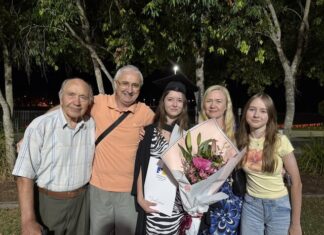Tourism Research Australia has unveiled the latest visitor statistics, revealing a surge in spending within the Noosa region.
Total spending in the Noosa Local Government Area (LGA) soared by 26 per cent to $1.45 billion in the year ending September 2024, showcasing Noosa’s enduring appeal and economic resilience, despite a drop in visitor numbers.
Tourism Noosa chief executive officer Sharon Raguse highlighted the significant increase in visitor spending as a testament to Noosa’s enduring appeal as a premier destination.
“While the drop in overall visitor numbers is a challenge, the increased spending per visitor is a positive sign that those who do come to Noosa are deeply engaged and enjoying their stay,” she said.
“We are especially pleased with the growth in international markets, with the UK showing remarkable gains. This reinforces the importance of our continued investment in international marketing and partnerships.
“It’s encouraging to see that 70 per cent of UK visitors to the Sunshine Coast are staying in Noosa, reflecting our region’s strong appeal and its reputation as a must-visit destination in Australia. This highlights the effectiveness of our targeted marketing campaigns and collaborative efforts with industry partners in the UK.
“Tourism is a cornerstone of Noosa’s economy, supporting thousands of local jobs. With one in seven jobs directly attributed to tourism, encompassing businesses from cafes and restaurants to tours, experiences, retail, and many more not traditionally seen as tourism businesses.
“Looking ahead, we remain committed to enhancing the visitor experience and supporting our local businesses to ensure Noosa continues to thrive as a top travel destination.”
Domestic overnight visitors rose by one per cent to 972,000, though their spending fell by 14 per cent. However, compared to 2019, their spending increased by 30 per cent while their numbers fell by 4.5 per cent.
Queensland overnight visitors led the charge, with an 18 per cent increase in visitor numbers and a 23 per cent rise in nights spent, contributing $593 million — two per cent more than last year and a 73 per cent increase from 2019. Their average daily spend increased from $190 to $330.
Domestic holiday visitor numbers fell by 7.5 per cent, while visiting friends and relatives increased by 10.6 per cent. International visitors spent $116 million, nearly six per cent more than pre-COVID 2019, with their numbers reaching 93 per cent of 2019 levels. New Zealand remained the most valuable market, spending $33.6 million, while the UK market doubled its spend to $30.7 million, increasing visitor numbers by 30 per cent to 48,000.
Interstate visitors contributed 44 per cent of total visitor spend, despite making up only 17 per cent of visitor numbers, while day-trippers accounted for 42 per cent of numbers but only seven per cent of spending.







